All rights reserved. No part of this book may be reproduced
of the copyright owner and the publisher.
ANVIL PUBLISHING, INC.
Authors Spotlight:
Q&A with K-Drama Cookbook chefs, Lily Min and Reggie Aspiras
1. What is K-Drama Cookbook all about? How would you introduce this title to Filipino foodies?
CHEF REGGIE: K-Drama Cookbook is about the most beloved recipes that are featured in Korean dramas, better known as Koreanovelas here in the Philippines. It has everythingfrom ttopokki to jjajangmyeon to all the other dishes that made K-drama fans mouths water while watching! How would I introduce this title to Filipino foodies? Well, Filipinos love K-dramas so much I think this cookbook needs no introduction.
2. When and where did you meet each other and how did you two come about the idea of making this cookbook?
CHEF LILY: In September 2018, when I hosted a special lecture about Chuseok (Korean Thanksgiving) food organized by the Korean Cultural Center in the Philippines, Chef Reggie visited to cover the event. We met and became very close since then. We learned that we have similar aspirations; mine is to share Korean cuisine around the world and Reggies is to introduce it to Filipinos who are interested. This is how the idea of making this cookbook first occurred to us.
3. What roles did you two play in this collaborative project? Who is in charge of what? Describe the dynamics of your duo.
CHEF REGGIE: Well, Lily is my Seoul sister, my bestest friend from Seoul. She is a Korean food expert and what she brings to the plate is her expertise on authentic, 100% well-done Korean food. On my end, what I have for you are my notes and recommendations. As you very well know, or perhaps youve seen in Notes from My Kitchen , I like eating things in different ways. I dont like flat tastes and single flavors; I like my food multi-faceted and with a lot of things going on. Thus, I have Filipinized some of Lilys Korean recipes and added my own tweaks on them using ingredients that are locally available. Lilys recipes are traditional while mine are modern variations. She is a very straightforward cook while Im a playful one and thats how were very different and, at the same time, thats how we complement each other.
4. How did you choose the recipes included in this cookbook? Did you follow a set of criteria for shortlisting?
CHEF LILY: There are many different types of Korean food such as royal court food, temple food, food for special occasions, and so on. Some of which have appeared inand even made popular throughout the world byKorean dramas and this is what I considered in selecting the dishes to be included in this cookbook. I also considered the source of ingredients; I chose recipes that used locally available ingredients.
5. Among the 36 Korean dishes in this cookbook, what is your favorite and why should others try it?
CHEF REGGIE: I dont really have one particular favorite. Korean cuisine to me is one of the most exciting cuisines in the world. It is so diverse. There are so many dishes to eat, discover, and makein so many ways. Their stews alone are so complex there are so many; their soups are plentiful; their noodles are plentiful. So, is there a favorite? No. I still try to figure out each time I try a new dish if it isnt my favorite because everything has become quite my favorite of late.
6. Korean dramas are known for their eating scenes and food-centric storylines. What role does food play in these dramas and the Korean culture in general?
CHEF LILY: In Korean culture, sharing food and eating together have important meanings. For example, saying Would you like a cup of tea? or Lets have a meal together! means Im interested in you, or I want to be friends with you. In some way, food serves as a bonding tool for us. It is not only for our health and well-being but it is also a means to nurture relationships and show intimacyand these are the very roles of food in K-dramas.
7. You are an icon in the Philippine culinary industry. Why do you think its important to have this kind of cookbook in the country?
CHEF REGGIE: K-Drama Cookbook is a way of two cultures coming together through food, coming together through the palate, coming together through love, mutual interest, and understanding and these are why we should have this kind of cookbook. You see, theres no better way to come together, to make friends, to make lasting memories and bonds, than through food.
8. The Philippines is very warm and accepting towards the Korean popular culture, entertainment, and cuisine. What do you feel about this?
CHEF LILY: Filipinos are warm and kind. They respect other cultures and are very open-minded and understanding. This is why I feel so honored to introduce Korean culture to them through food. I am also very happy that they like Korean food! I hope this good relationship between our countries continue to prosper.
9. What can your readers look forward to in this cookbook that they wouldnt find in any other cookbook?
CHEF LILY: There is a story in Korean cuisine and I did my best to present this in every recipe in this cookbook. They are written in the most detailed yet basic way so that everyone can follow them well. I also included useful tips and trivia on Korean cooking and most importantly, I prepared and cooked the dishes the way they are presented in the dramas.
CHEF REGGIE: You wouldnt really find the content of this book in any other book because one, Lily has simplified it, and two, I have my personal notes in it. Here, Lily and I have shared our own uniqueness in terms of being cooks. The combination of our outputs will be very difficult to find elsewhere. Its a book thats uniquely its own. Its like a Filipino-Korean friendship cookbookthats what it is.
10. Do you have a message for those who will try out your recipes?
CHEF LILY: Familiarize yourself with the general information and general tips first. Before you cook every dish, refer to the chefs notes, then follow the step-by-step procedures. This way, you can cook and enjoy authentic Korean food at home.
CHEF REGGIE: Well, cook themcook them Lilys way, cook them my way, then cook them your way. Theres not one way. Its all about what you enjoy, what you love to eat, how you like to eat it. There are no rights, no wrongs. Its what makes you happy.
General Information
Obangsaek (O = Five, Bang = Directions, Saek = Colors)
The Korean word obangsaek pertains to the concept of five directions (east, west, north, south, and center) and five colors (blue, white, black, red, and yellow) where each direction is associated with each color respectively.
This concept is connected with the elements of the earth, seasons, and five vital organs of the body (heart, liver, lung, kidney, spleen). It represents harmonization with nature, health, and prosperity.

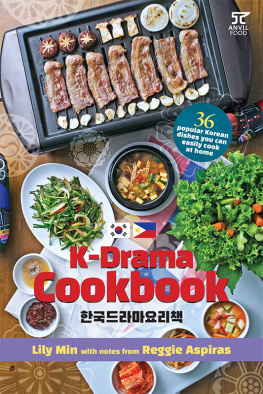
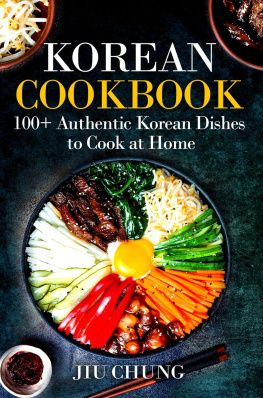

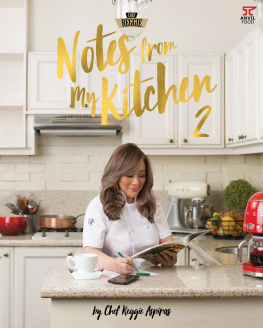
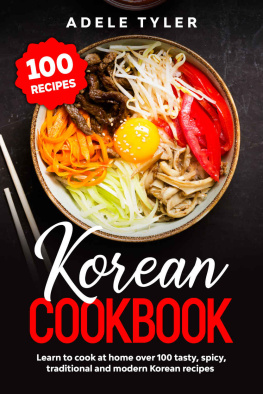
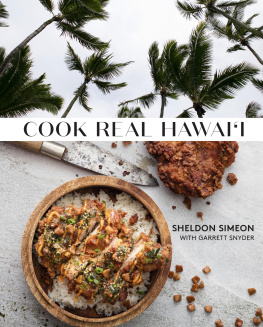

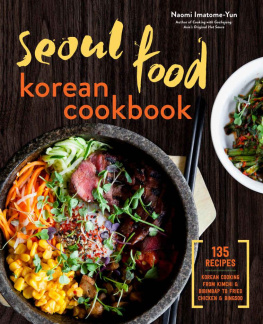
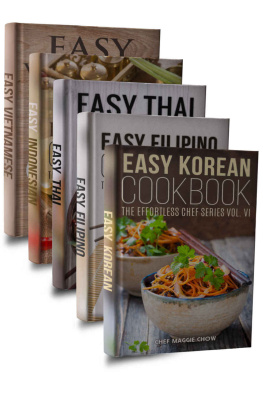
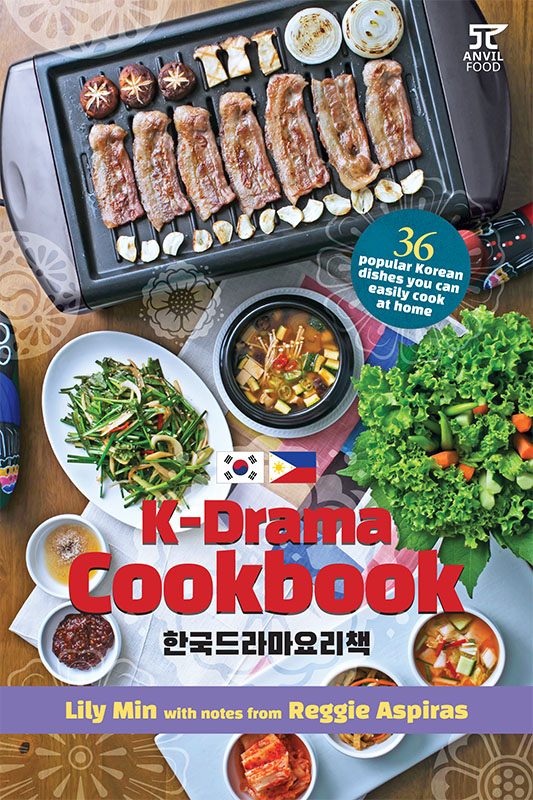
.jpg)